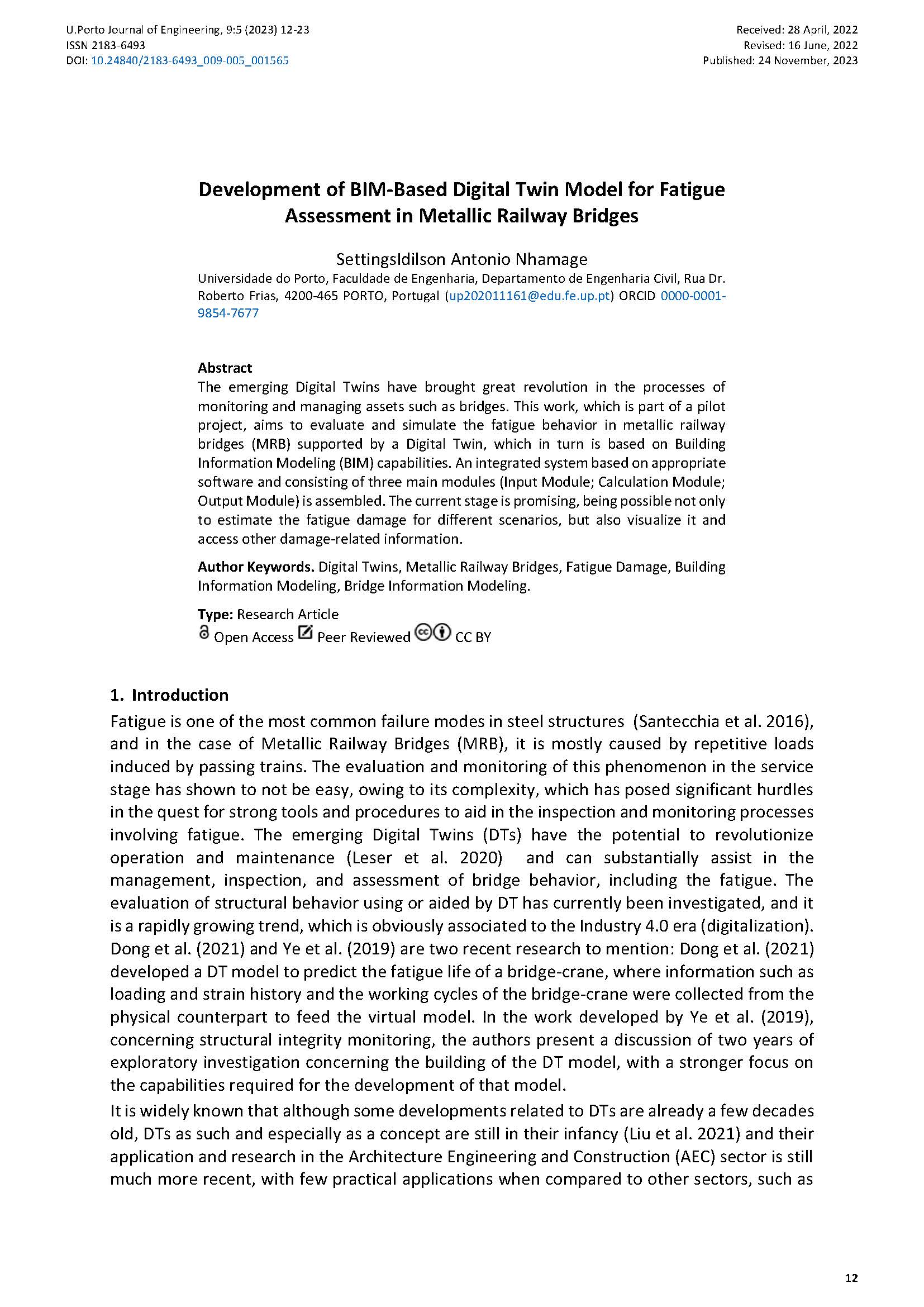Development of BIM-Based Digital Twin Model for Fatigue Assessment in Metallic Railway Bridges
Main Article Content
Abstract
The emerging Digital Twins have brought great revolution in the processes of monitoring and managing assets such as bridges. This work, which is part of a pilot project, aims to evaluate and simulate the fatigue behavior in metallic railway bridges (MRB) supported by a Digital Twin, which in turn is based on Building Information Modeling (BIM) capabilities. An integrated system based on appropriate software and consisting of three main modules (Input Module; Calculation Module; Output Module) is assembled. The current stage is promising, being possible not only to estimate the fatigue damage for different scenarios but also to visualize it and access other damage-related information.
Downloads
Article Details

This work is licensed under a Creative Commons Attribution 4.0 International License.
Authors who publish with this journal agree to the following terms:
- Authors retain copyright and grant the journal right of first publication with the work simultaneously licensed under a Creative Commons Attribution License that allows others to share the work with an acknowledgement of the work's authorship and initial publication in this journal.
- Authors grant the journal the rights to provide the article in all forms and media so the article can be used on the latest technology even after publication and ensure its long-term preservation.
- Authors are able to enter into separate, additional contractual arrangements for the non-exclusive distribution of the journal's published version of the work (e.g., post it to an institutional repository or publish it in a book), with an acknowledgement of its initial publication in this journal.
- Authors are permitted and encouraged to post their work online (e.g., in institutional repositories or on their website) prior to and during the submission process, as it can lead to productive exchanges, as well as earlier and greater citation of published work (See The Effect of Open Access).

